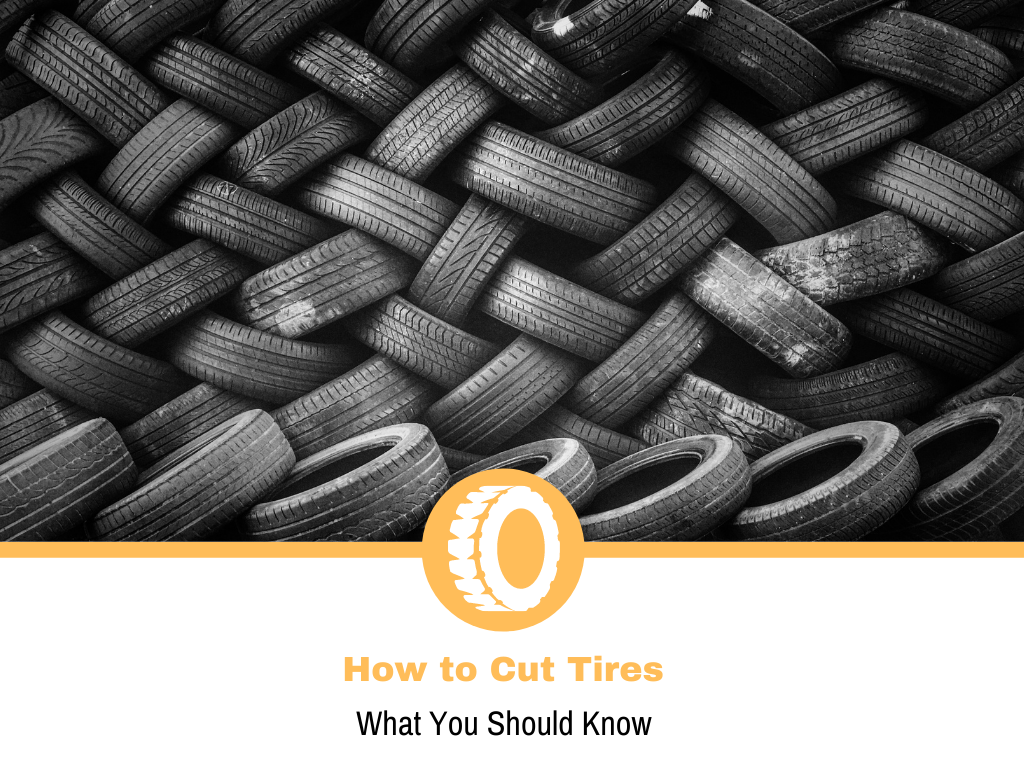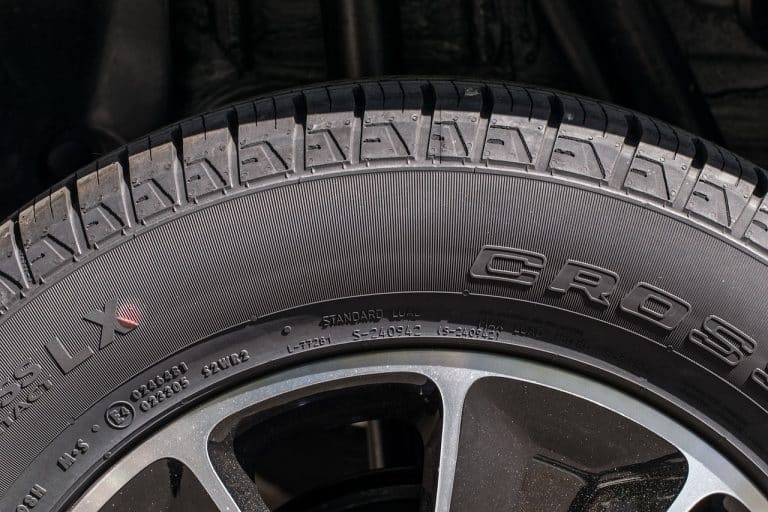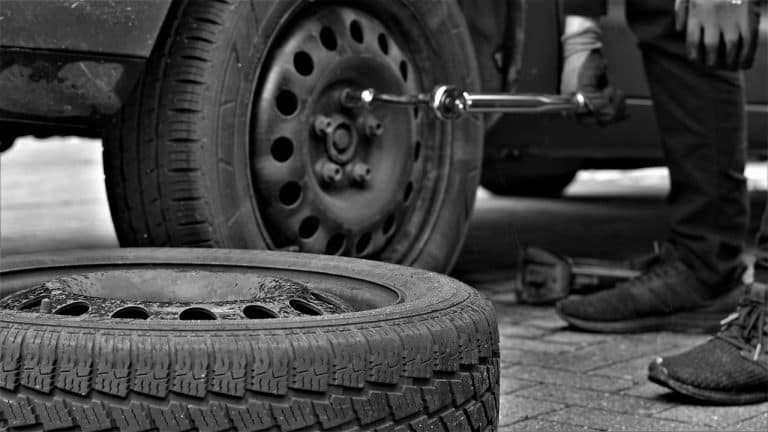How To Cut Tires In Half
Whether for proper tire disposal or for recycling into ornamental, farming, or gardening purposes, cutting tires in half is the most sensible thing to do with your old, scrap tires. However, tires are built with durable rubber to withstand extreme abuse and are wrapped inside with high-tensile metal belts, so you’ll need to be equipped with the right tools to get through them.

To cut tires in half, you can opt to choose between two easy-to-follow processes: First is by removing the sidewall with a knife or any sharp and pointed tool through the seam found in the sidewall just below the tread. The second is to reduce them into more manageable pieces with the use of power tools such as a jigsaw, circular saw, or Dremel tool equipped with metal cutting blades.
What You Need To Consider Before Cutting Tires
Before you proceed with cutting tires, you must first check with your community if there are specific regulations on tire handling and proper disposal. Because tires are made with man-made rubber, they are non-biodegradable and their chemical composition can seep into the ground. That is why some local ordinances are very specific on this aspect.
Regulation
Since scrap tires or old tires are considered solid wastes, they are regulated primarily by state governments. As of writing, there are already 48 states that have specific laws or regulations in dealing with scrap tires management. While each state’s program is unique, proper delegation on handling, disposal, and recycling are the common themes.
Proper disposal
If you will cut tires just to easily dispose of them, without the consideration of reusing or recycling, you should also consider your local or municipal regulations. Some municipal ordinances have tire disposal guide requirements. For example, some specific guidelines mention that tires should be cut into a minimum of two pieces.
Safety
When cutting tires in half, you’ll be dealing with sharp and pointed tools for piercing through the sidewall and/or cutting through the tires’ tread. That is why safety must be observed at all times, keeping the tools away from the body is a good start.
Additionally, rubber fragments left after cutting tires vary in size, from considerable chunks to clouds of dust. This may have a chance to go through your nose or eyes which will cause irritation. On the other hand, the emitted fumes which resemble burning rubber can be toxic at moderate levels. Lastly, the exposed portion of steel belts is very sharp, so take extra precaution when handling cut tires.
How to Cut Tires In Half Method 1: Without The Use of Power Tools
Tools you’ll need:
- Sharp knife
- Pointed tool such as awl or ice pick (not required)
- Lubricant or WD-40
- Dowel
Step 1: Make a hole at the ‘sweet spot’ of the sidewall
The ‘sweet spot’ of the sidewall is the softer and smoother part about one inch near the tread. This is the weakest point in the tires with virtually no reinforced belts. Having said that, avoid cutting too close to the tread nor too close to the rim as these portions are saturated with steel belts.
To do this, strike the sidewall with the tip of the blade forcefully. If you’re having trouble, or unsure that the blade will just slide through, an awl, ice pick, or any similar pointed tool will help.
Step 2: Secure the tire to prevent it from rocking
The tire will likely roll or move while you’re slicing through the sidewall. To prevent this from happening, lay the tire flat on the ground, then step on the opposite section of the tire, away from where you are cutting. Another way is to keep the tire upright, locking your foot or thighs to prevent it from rolling. However, you should practice extra caution in this position and make sure that you are cutting in the direction away from your body.
Step 3: Cut through with a sawing motion
You can gain momentum if you are cutting with a sawing motion. Some tires have seams running through the sidewall, one near the tread and another near the rim. Make use of them as your guide while cutting through. When cutting along the sidewall, there will be a point that the blade will be harder to cut through the rubber. This is naturally brought about by friction, you can spray the blade with a lubricant and you’ll immediately notice the difference.
Step 4: Keep the cut section separated with a wooden dowel
Wooden dowels keep the cut area open, making it easier to cut through the rubber. These dowels pry apart the rubber on both sides, preventing the blade from being stuck.
Step 5: Continue cutting until the sidewall detaches
If you’re already halfway through, rotate the tire a little half to get a new position to continue. This will make the process easier. You can also use your free hand to pull the other side of the sidewall to help you slice through.
How to Cut Tires In Half Method 2: Slicing into Small Pieces
Tools you’ll need:
- Jigsaw, circular saw, or Dremel tool with a metal grinding wheel
- Ferrous cutting blade
- Lubricant or WD-40
- Goggles or safety glasses
- Dust mask
- Arm sleeves and gloves
- Vise or similar clamping device
Step 1: Set your cutting activity in an open outdoor space or a workshop
Cutting tires with power saws will leave behind lots of rubber and metal fragments, not to mention the fumes cut tire will emit during the process. Work in a secured location with proper tools and equipment to promote a safe, efficient, and neat tire cutting activity. If you will be working outside with no power outlets available, ensure that the extension cord you are using is rated for high-voltage applications.
Step 2: Prepare your tools
Any tire, regardless of its size, is stuffed with high-strength steel belts, with larger tires equipped with more reinforced steel. This is why it is necessary that the blade you’re using has the capability to cut through metal. Ferrous-metal cutting blades or metal grinding wheels will safely and efficiently do the task.
Also, wear your personal protective equipment such as safety glasses and a dust mask. The use of protective arm sleeves and gloves is also recommended to protect your limbs against metal shards flying out of the tire.
Step 3: Cut widthwise through one side
As your tire is laid flat on its side, press the blade laterally across the sidewall, working your way slowly from the tire’s inner lip to the edge of the tread.
Keep in mind that the innermost tough part of the tire, called a bead, has a bundle of high-tensile steel wires wound into a rubber band. You may feel a slight resistance on this part but there’s nothing to worry about if you’re using the right type of blade.
Step 4: Complete the cut from the opposite side
Flip the tire over to cut on the second side, applying the same trick done in Step 3. Then, cut across the tread to completely separate each end of the tire. Next, turn the tire 180-degrees and repeat the process to have a tire neatly divided in half.
This technique will save you a significant amount of time and energy as cutting this way reduces strain brought by the resistance of inner steel belts holding the tire together.
Step 5: Continue cutting in halves
Like slicing a pie, continue cutting each pair of the tire equally into smaller sections until you’ve reduced it to quarters or eights. As the pieces become smaller, they’ll be prone to moving and sliding due to the reduced weight, keeping them in place with a vise or similar clamping tool will help.
Tire Cutting Recommendations That Saves Time and Energy
Tire cutting, if not planned correctly, will entail additional yet unnecessary time, not to mention the extra effort that can be prevented in the first place. There are a few recommendations to consider such as starting the cutting process by piercing the sidewall with a pointed tool instead of the same cutting tool and avoiding cutting directly through steel belts manually.
Make a strong start by piercing a hole in the sidewall with a pointed tool
Use an awl, ice pick, or any similar tool that can be used for poking into the tire. This way, you’ll reduce the pressure you’ll exert into striking the tire if you will be using a knife or box cutter.
Cutting directly through steel belts is time-wasting if done manually
Unless you’re using a power tool, cutting directly through steel belts by hand requires too much effort, let alone your tool could dull or get damaged blades. Leave the cutting of tread and bead to a jigsaw, circular saw, or Dremel tool.
Tire Cutting FAQ
I’m planning to reuse old tires for ornamental purposes. What sort of tools are needed?
If you will be working with car tires, the process will be the same regardless of the size, as you will deal with the same steel reinforcements. If you don’t have any power tools in hand, you can use a good old hacksaw or a big pair of steel shears, though be prepared for a more tedious task, you’ll probably hurt your hands too.
Can I cut a tire off a rim?
Yes, it is possible. In fact, with the right angle, you can cut through easily and as close as possible to the rim. However, the challenge is to keep the angle of the blade correct, as you don’t want the blade hitting the rim.
Conclusion
The tire cutting process may look intimidating at first. This thought may be brought about by the use of high-powered tools and patient dealings with tough tire rubber materials. However, if done correctly, and equipped with the right tools and equipment, you can get through with this process with ease. Just remember to put your safety first at all times.





